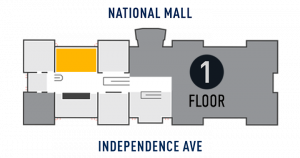Having departed from Wright, Frederick Rentschler informed the Navy of his plan to manufacture air-cooled radial engines, and incorporated the Pratt & Whitney Aircraft Company on July 23, 1925. This Serial Number 1 Wasp, the first of a long series of famous aircraft engines from Pratt & Whitney, was completed on December 24, 1925 and finished the 50-hour approval test in March 1926. On May 5 a second Wasp took to the air in the Wright F3W-1 Apache aircraft. A contract for 200 Series A Wasps was received and production engines delivered before the end of 1926.
Known for its reliability, the new engine soon dominated U.S. fighter planes, and made commercial air transportation profitable in the Boeing 40A. The Boeing F2B-1 was the first operational aircraft to use the Wasp engine. Approximately 100 different experimental and production airplanes utilized the engine, with the Wasp R-1340 remaining in production until 1960.
Display Status
This object is on display in America by Air at the National Air and Space Museum in Washington, DC.

Object Details
Date
1925
Country of Origin
United States of America
Type
PROPULSION-Reciprocating & Rotary
Designer
George J. Mead
Manufacturer
Pratt & Whitney
Physical Description
Type: Reciprocating, 9 cylinders, radial, air-cooled
Power rating: 317 kW (425 hp) at 1,900 rpm
Displacement: 22.2 L (1,344 cu in)
Bore and Stroke: 146 mm (5.8 in.) X 146 mm (5.8 in.)
Weight: 327 kg (720 lb)
Condition: Complete engine; grey crankcase and black cylinders; on display stand.
Dimensions
3-D: 102.6 × 128.5cm, 326.6kg (40 3/8 × 50 5/8 in., 720lb.)
Support: 108.6 × 126.4 × 111.8cm (42 3/4 in. × 49 3/4 in. × 44 in.)
Materials
Metal
Inventory Number
A19510099000
Credit Line
Transferred from the Department of the Navy, Bureau of Aeronautics
Data Source
National Air and Space Museum
Restrictions & Rights
Usage conditions apply
For more information, visit the Smithsonians Terms of Use.